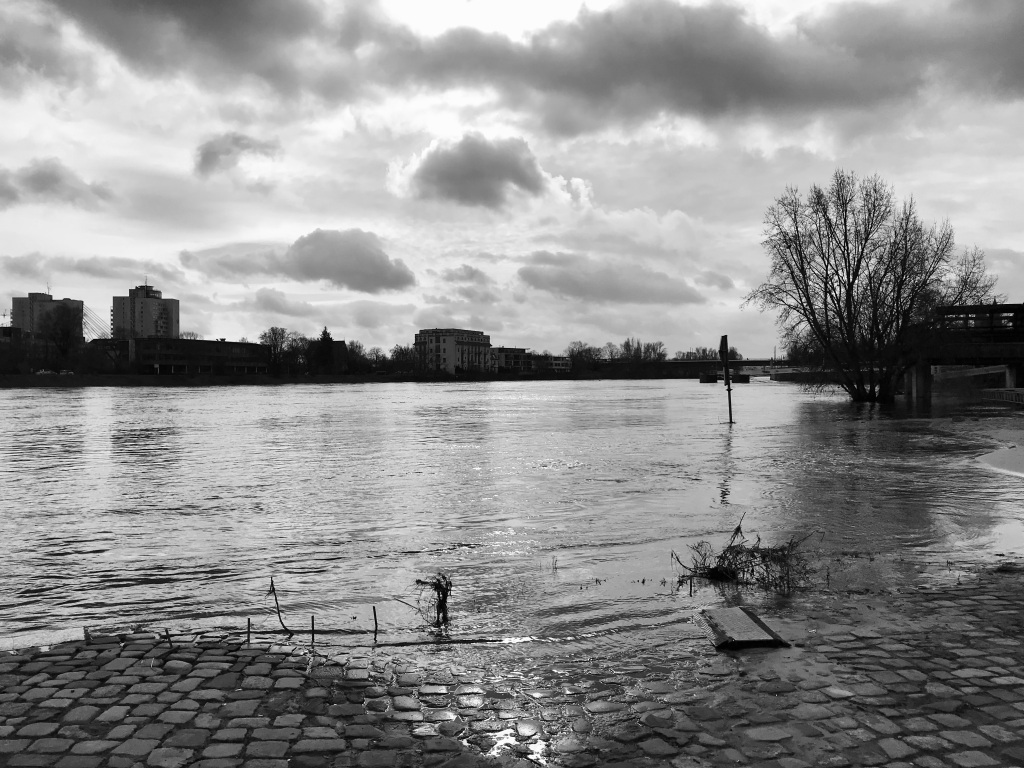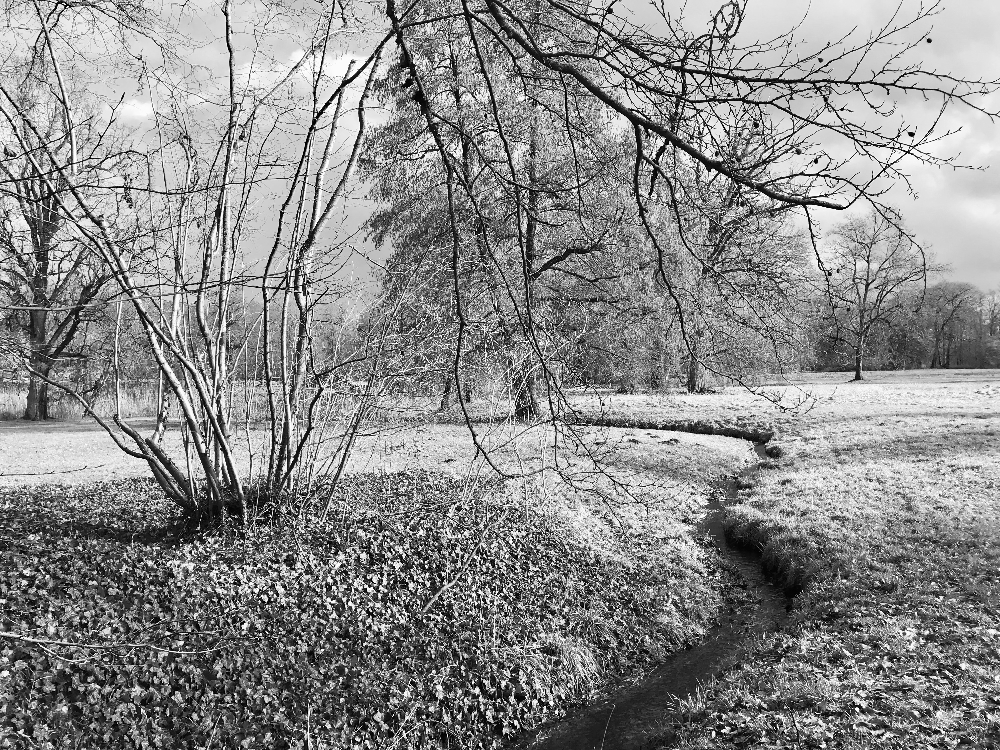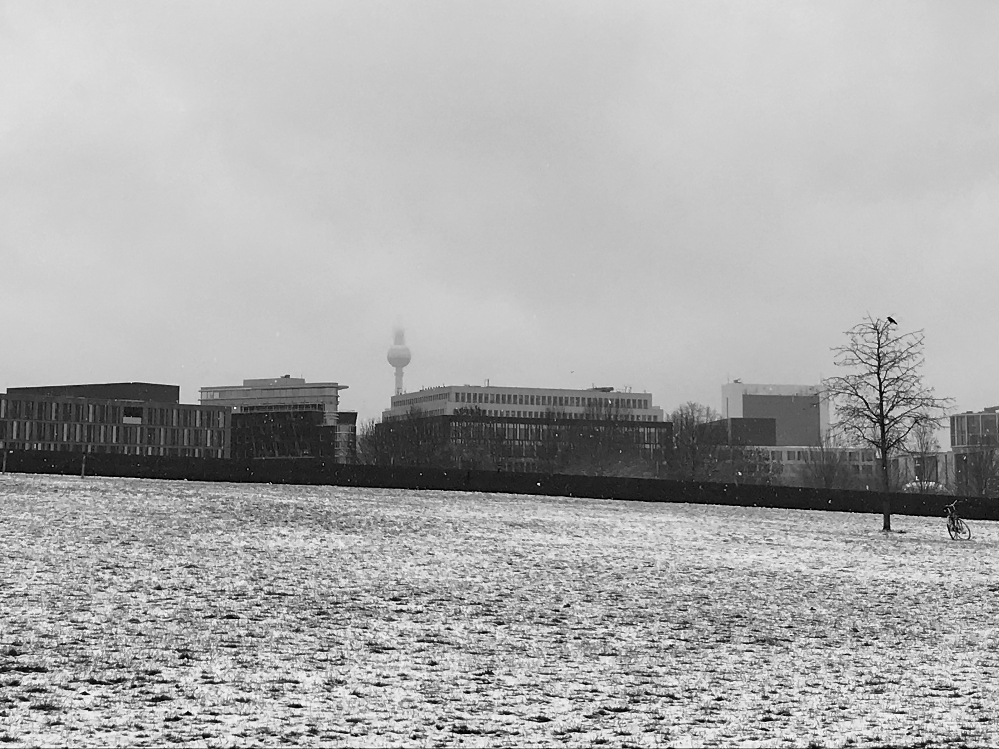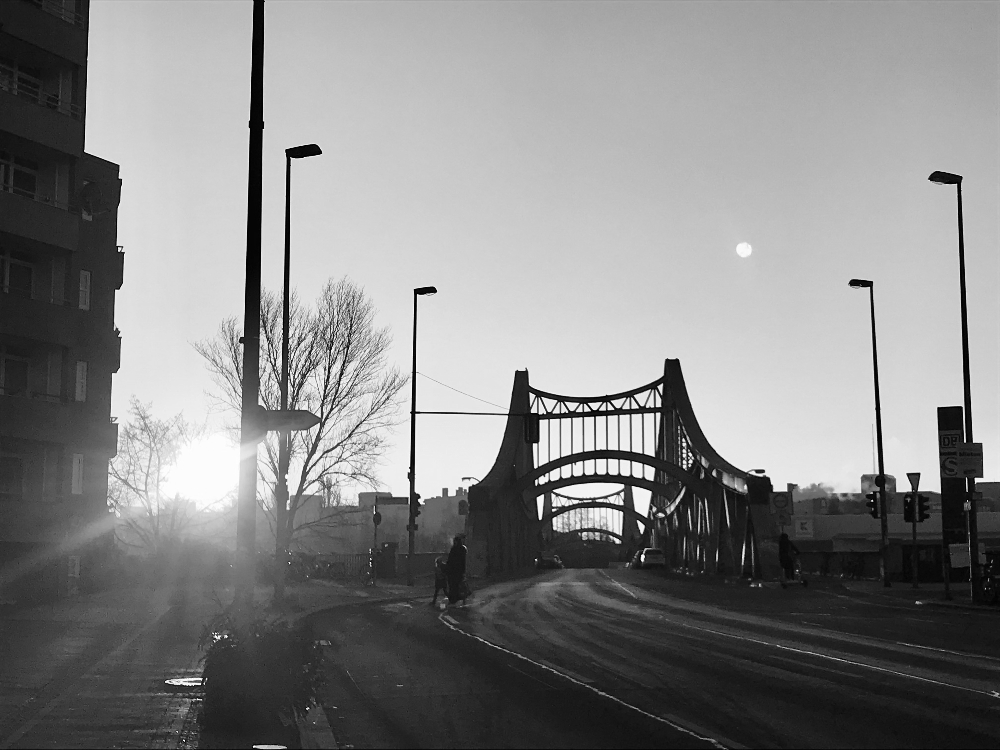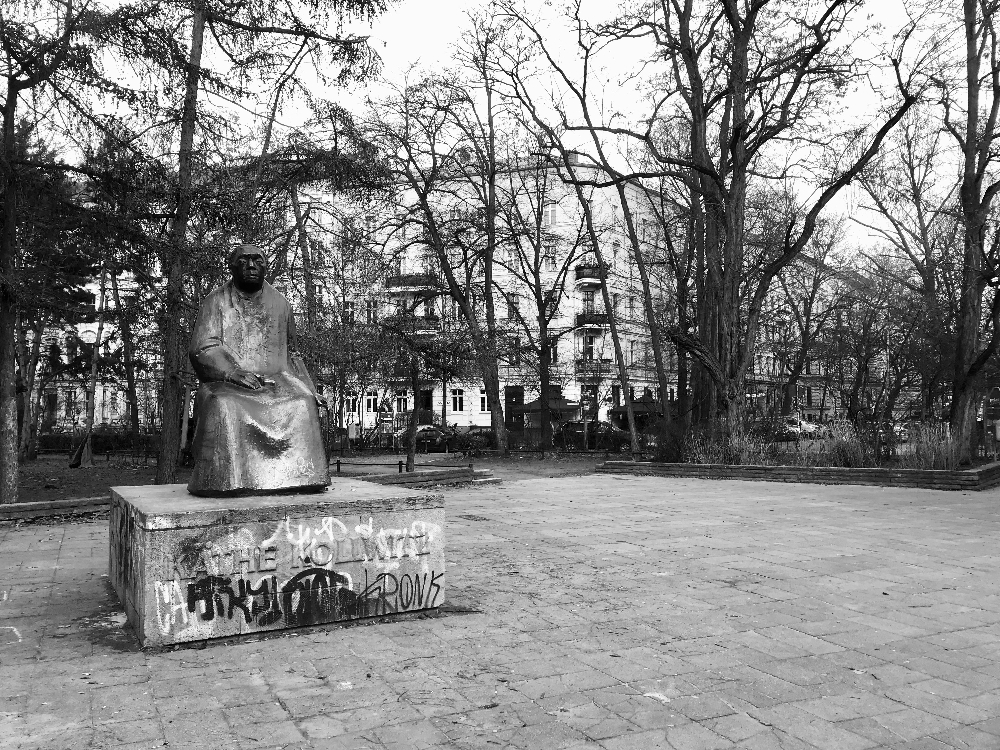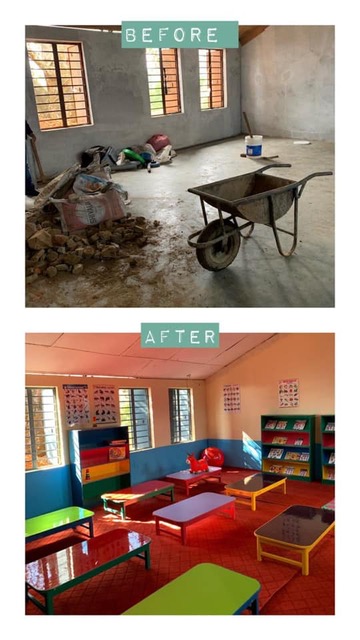
In Wiesenburg, in the driest corner of Brandenburg, where the sandy soil absorbs water as quickly as it can fall from the sky, the fields and meadows are flooded. Ditches that have been dry for years flow as streams. Standing water creates a reflective pool next to the footpath through the Schlosspark. On the radio, the announcer tells us this has been the wettest winter since records began.
*
What is litost? Litost is a state of torment created by the sudden sight of one’s own misery.
Is it possible for a country to suffer from litost? Milan Kundera describes the meaning of the Czech word in the pages of The Book of Laughter and Forgetting. Kundera’s character argues that it is predominantly an affliction of the young. On our kitchen wall there is a map from the early 19th century. At that moment, Germany existed only as a concept or a dream. An imaginary nation like any other. This is a young country.
Newspaper articles speak to a pervading feeling of angst and anxiety ahead of the European Championships this summer. The atmosphere of the country as a whole is compared to 2006 and the last time Germany hosted a major football championship. The World Cup was a Sommermärchen – a summertime fairy tale.
The world came to Germany and liked what they found. Klinsmann’s young team reached the semi finals, narrowly losing to the eventual winners in dramatic extra-time scenes. The Black-Red-Gold flew from balconies and the backs of taxis; a sea of patriotic pride in the stands.
A year later I met the husband of a friend in Lower Saxony. We were on a road trip and had stopped for the night.
‘It was the best summer of my life,’ he said.
*
Is Germany so radically different today than eighteen years ago? It certainly feels that way. And yet: Our daughter was born three days before the opening match of the World Cup, and spent the first week of her life in the hospital in Pankow. A day or so after she was born there was a demonstration outside the S-Bahn station and up to the town hall. A mosque was to be built at the top end of the Prenzlauer Promenade, where the street lifts up over the railway tracks and becomes a motorway.
The demonstration was against the establishment of the mosque. The police presence was large but although a handful of counter-demonstrators made their feelings known, there seemed little possibility of trouble beyond a bit of traffic disruption. Outside the station, extra police officers loitered in the sunshine and practised their English from crib-sheets that were clearly part of their World Cup preparations. Newspaper articles abroad warned of certain no-go areas for fans, particularly in the old East.
*
The hospital in Pankow is on Breite Straße. Before Pankow was absorbed by Berlin it was called Dorfstraße. From 1971 until 1991 it was named for the poet and communist Johannes R. Becher, who was Minister for Culture in the German Democratic Republic and lived for a while around the corner on the banks of the Panke, along with other head-honchos of the SED before they fled in the face of public dissatisfaction to their forest compound outside Wandlitz.
After reunification, Breite Straße – “the boulevard of the North” – became Breite Straße once more.
In The Book of Laughter and Forgetting, Kundera describes a character who wanders a street that has changed names five times in 70 years.
Wandering the streets that do not know their names are the ghosts of monuments torn down.
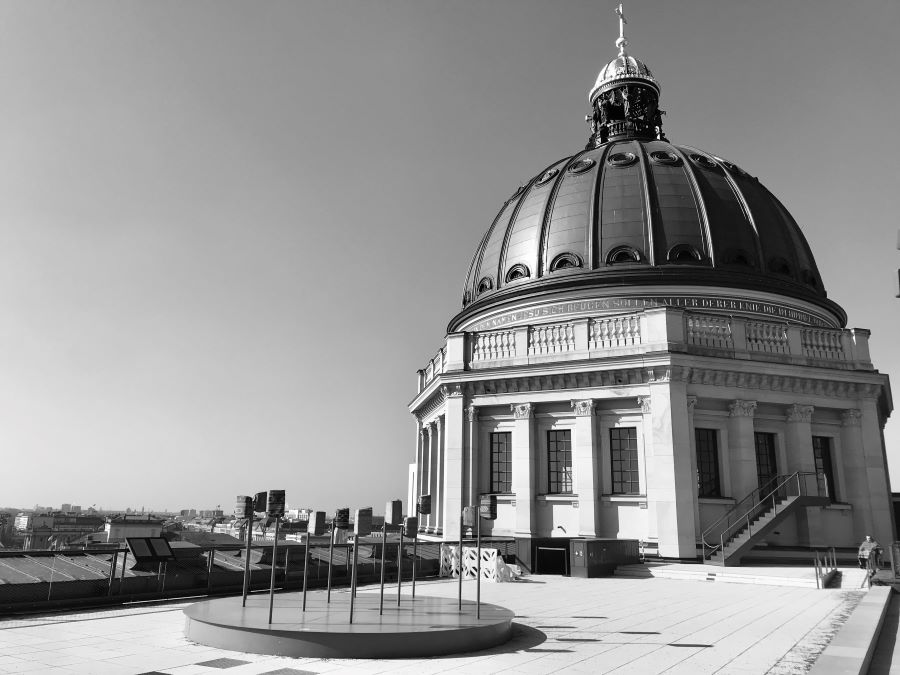
What ghosts are stalking the New/Old Royal Palace on Unter den Linden, as uncanny a place as Berlin has to offer? On the roof, in the shadow of the palace dome with its golden cross and an inscription calling on all peoples to submit to Christianity, is a sound installation by the artist Emeka Ogboh, titled ‘Cosmos – Things Fall Apart’
On the strike of every hour, it is possible to hear the choral singing of the Igbo folk song Nne, Nne, Vdu from Nigeria, accompanied by chants inspired by a line from Chinua Achebe’s novel that – in turn – inspired the name of the installation.
The folk song and the chat originate from a rich Igbo tradition of oral storytelling, and are a critique of Christianity’s influence and disruption on the Igbo culture.
We stand and listen in the late winter sunshine as the cross on the palace dome glows like the cross that forms on the ball of the TV Tower, just a few hundred metres away.
*
To explore our home city with friends who are experiencing it for the first time is to reflect once again on how a place tells the stories of its past, of which stories it chooses to tell and which it chooses to forget, and of which monuments it erects or reconstructs, and which it chooses to tear down.
We leave the New/Old Royal Palace to pause at the Neue Wache and its oversized casting of Käthe Kollwitz’s beautiful sculpture Mother with her dead son – the guardhouse now a memorial to the victims of war and tyranny. We cross the street to look down between the cobblestones to the sunken memorial of Bebelplatz that marks the spot where Nazi students burned books on 10 May 1933. We take in an ad hoc and continually updated memorial that has been created outside the Russian Embassy to remind all that pass by of the crimes being committed in Ukraine. We walk between the slabs that make up the Memorial to the Murdered Jews of Europe and peer into the single slab across the street that is the Memorial to the Persecuted Homosexuals Under National Socialism.
From here it is a short walk to Wilhelmstraße 92. There you find a small information board with a map of Africa and a text in three languages. This is the site of the Berlin Conference in 1884, which formalised the so-called “Scramble for Africa” as almost the entire continent was divided between European colonial powers.
The Nigerian historian Olyaemi Ainwumi writes: The foundation for present day crises in Africa was actually laid by the 1884/85 Berlin Conference (…) the Conference did irreparable damage to the continent. Some countries are still suffering from it to this day.
In our short walk along Unter den Linden and through the Brandenburg Gate, it would be easy for our friends to think that Germany is a country that takes its historical reckoning extremely seriously indeed. And sometimes it does. But on Wilhelmstraße, a modest and easy-to-ignore memorial to an event so central to the history of both Africa and Europe reflects the priorities and choices we make; of what we remember, and how we choose to remember it.
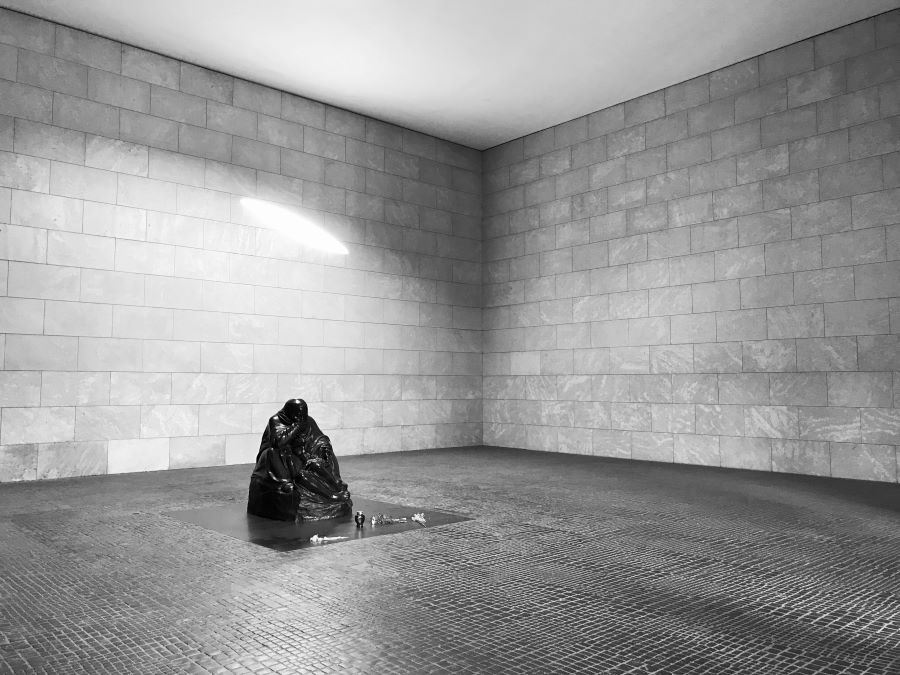
By the Spree, next to the German History Museum, an art market attracts a crowd. It is International Women’s Day – a public holiday in Berlin. On the opposite embankment, a small group hold a vigil for the women of Iran, some of the many victims of the regime, whose photographs look at us across the water in the sunshine.
*
The Guardian reports that a print of Gerhard Richter’s Birkenau cycle has “returned” to Auschwitz with a new exhibition in the city of Oświęcim. The cycle is a powerful work of art, with Richter’s paintings made over the top of prints of photographs smuggled out of Auschwitz-Birkenau.
Richter discovered them in the 1960s and was struck by how some could be perceived at first as benign photos of the forest…
To understand them, you need to understand where they are from. Richter’s idea was to blur them with thick layers of paint, squeezed and smudged and scraped; that it was only by ‘obscuring the unthinkable’ was it possible to make the true, horrific story behind the photographs clear.
*
In ACUD there is a night of discussion and poetry inspired by the work of Friedericke Mayröcker. In a neat coincidence, two of the translated poems read out by two different translators mention Heinrich Heine. A statue of Heine stands across the street from ACUD, guarding the entrance to Weinbergspark. It is also a quote from a Heine play, written more than a hundred years before, that marks the spot on Bebelplatz where the books were burned. Tonight he is keeping his fellow writers company as they nervously smoke the edge off before crossing the street to climb the stairs and give their readings.

All of a sudden it appears. On Swinemünder Straße the colours are striking against the gloom of a grey sky and the block of flats beneath. The blossom is emerging. Springtime is coming.
*
Pankaj Mishra publishes a fine essay for the London Review of Books. The front page of the new edition is simply a quote from ‘The Shoah after Gaza’:
Memories of Jewish suffering at the hands of Nazis are the foundation on which most descriptions of extreme ideology and atrocity have been built. But these universalist reference points are in danger of disappearing as the Israeli military massacres and starves Palestinians, while denouncing as antisemitic or champions of Hamas all those who plead with it to desist.
*
The blossom comes to the Berlin Wall Trail early this year. Underneath the railway tunnel that links the Soldiner Kiez of Wedding/Gesundbrunnen with Pankow, there is a rewilded stretch of the Panke river, a collection of beehives among the long grass of the old security strip, and a neat line up of cherry blossom trees that provide a burst of colour each spring along different stretches of the old border.
In the park we toast Katrin’s birthday in the same beer garden where we drank mulled wine on New Year’s Day. We have more company today, as the arrival of good weather pulls Berliners from their apartments. It is the one weekend of the year when our fellow cityfolk forget themselves. The first fine weekend is a time to forgo the default grumpiness of the average Berliner, and the path along the riverbank is filled with the sound of cheerful greetings and the cling-a-ling of bicycle bells.
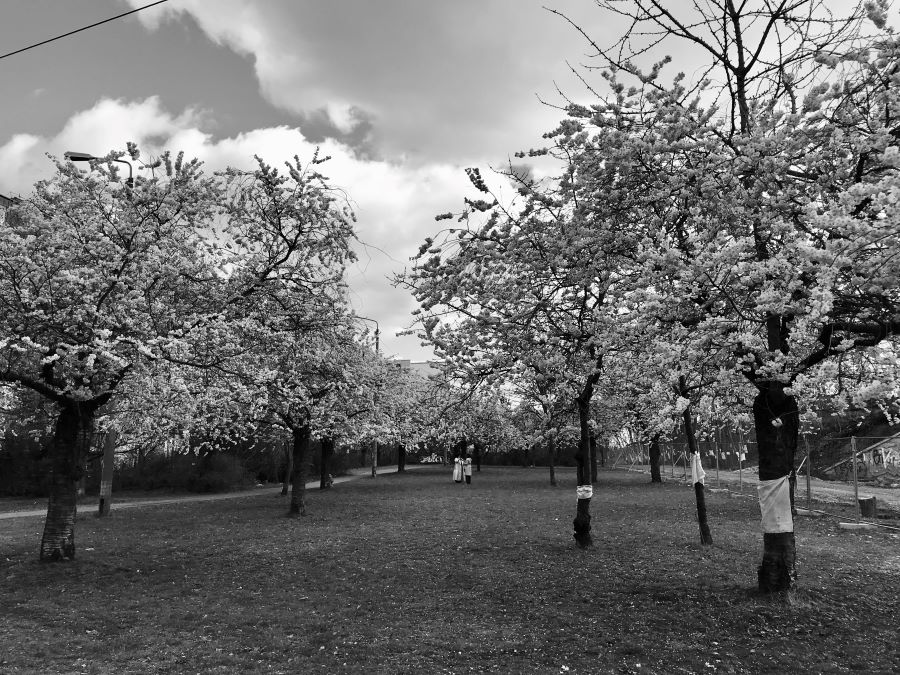
At the Komische Oper, currently housed in the Schillertheater, The Magic Flute is a visual mix of Czech fairy tale and 1920s silent movie.
If we could lock the mouths of all the liars, instead of hatred, slander and cruelty we would have love and brotherhood.
*
A memory walk with some young people from the sixth grade of our daughter’s school, taking in the stories of Mitte. Koppenplaz and its memorial of an upturned chair. Große Hamburger Straße and the place where the Jewish Berliners of the neighbourhood were brought before being transported east to the camps. On the pavements, the shining cobblestones that remember those who never returned.
It also happens to be ‘Motto Week’ for the 12 Graders of Berlin’s high schools, a week of costumes and pranks, and after-school beers in the weak, springtime sunshine. Do you remember that feeling? The rush towards adulthood? The anticipation of the next stage of life? As the kids fool around near Oranienburger Straße, it is possible to feel their impatience to get to what’s next. I want to stop them all – the skeleton, the nurse and the young man in a bathrobe smoking a fag – and tell them to take it easy. That there’s no rush. But what do I know?
On the street we experience this mix of stories from the past and a carnival atmosphere of the present. It isn’t jarring. It is both laughter and a refusal to forget. One need not cancel the other out.
*
Statues are raised into position on the New/Old Royal Palace, close to where the Igbo folk songs sound on the hour. Some of the new arrivals have been funded by dubious characters.
It appears, says Jürgen Zimmerer of the University of Hamburg and quoted in the media, that we are dealing with a targeted infiltration of the Berlin palace by fundamentalist rightwingers who want to turn it into a symbol of a Christian and thereby ‘white’ ethnic Germany.
Since a peak of around 22% in January’s opinion polls, the AfD have dropped around 4-5 points following the revelations of meetings to discuss ‘remigration’ in Potsdam and the huge demonstrations that followed.

We walk along the Panke, following the river on part of a route the Prussian King used to travel between his palace in Charlottenburg and his wife’s summer residence in Niederschönhausen. The royal barge was pulled by animals along the towpath where we now walk, and the story goes that extra ditches had to be dug to make the river somewhat navigable.
It seems unlikely. But then the growth of industrial Wedding and northern Berlin in the decades that followed the King’s journeys altered the water levels of the city beyond recognition. Before the factories came, the biggest danger to the quality of the river water was people.
‘Don’t piss in the Panke,’ they would say, up in Bernau close to the river’s source. ‘Tomorrow we’re brewing.’
*
The wind has lost its chill but the evening still smells of woodsmoke in Wiesenburg. It is Easter weekend and the motorbike riders of Berlin and Brandenburg have uncovered their machines and pulled them out of winter hibernation. Geese gather by the banks of the village pond and overhead the storks circle the village having made their return.
Blossom and buds. Daffodils in bloom. Can we say goodbye to winter? The weather forecast is for 23 degrees and in Wannsee the first swimmers of the season have taken to the water.
Nature’s first green is gold,
Her hardest hue to hold.
Her early leaf’s a flower;
But only for an hour.
Then leaf subsides to leaf.
So Eden sank to grief,
So dawn goes down to day.
Nothing gold can stay.
Robert Frost knew that the golden moments cannot last. I think of the young man in his bathrobe and sunglasses, cigarette in hand, school almost behind him. A golden moment indeed.
*
Beside the fire engine we discuss the origins of the Easter Fire. It is a mix of pre-Christian and more recent religious traditions. The undimmed light of Christ or the victory of Spring over Winter? Take your pick. In any case, in Brandenburg only 18% of people are members of a church. A greater percentage than that from the village have wandered out from their homes to enjoy the spectacle. Now it is a simple statement of community. Of coming together. Beer and schnapps. Sausages on the grill. Bats dancing the gloaming as the fire is lit, and when darkness comes, it illuminates the sky.

Words & Pictures: Paul Scraton

